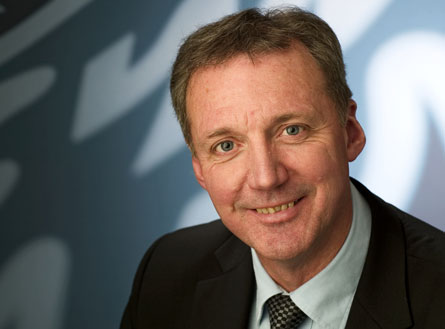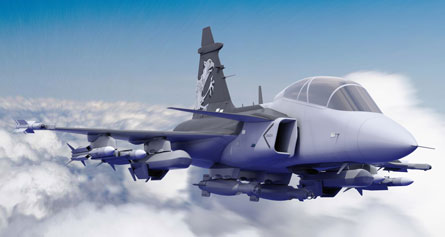Currently celebrating its 70th anniversary as an aerospace manufacturer, Saab is continuing to adjust to the post-Cold War demands of the Swedish armed forces, while also seeking new defence exports and carving a niche as a supplier to commercial products including the Airbus A380 and Boeing 787.
"We started building aircraft [in 1937] because Sweden couldn't buy them", says Saab chief executive Ake Svensson. The company has delivered more than 4,000 aircraft since 1941, including over 500 airliners, the last of which - a Saab 2000 turboprop -3 was produced in 1998.
Now employing more than 13,000 people, Saab's growth has come largely within the last decade, following its acquisition of domestic firms Celsius in 2000 and Ericsson Microwave Systems in 2006, when company revenues topped SKr21 billion ($3 billion).
"Our history is based on Swedish investment in high-technology defence systems," says Svensson, who describes Saab's structure - of 17 companies reporting into three business units - as making it "a complete system house".
 |
|---|
© Saab |
Saab Aeronautics, which includes its Aerostructures, Aerosystems, Aircraft Leasing and Gripen International activities, accounted for 26% of business in the second quarter of 2007, with its Systems and Products and Defence and Security units claiming 37% each. Reflecting its increasingly international flavour, 64% of Saab's orders now come from outside Sweden, along with 81% of its order backlog.
Sweden's JAS 39 Gripen entered development in 1982 and is also now in use in the Czech Republic and Hungary, while South Africa will introduce its first example into squadron service next March. Gripen International is eyeing sales of at least another 200 new or remanufactured aircraft, with India's $10.2 billion, 126-aircraft medium multirole combat aircraft requirement the glittering prize. "It will be a fierce competition and an industrial and technical challenge," says Svensson. "It must be a winning proposal in my view."
Also being offered the Gripen to replace its Lockheed Martin F-16s in contest with Lockheed's F-35 Joint Strike Fighter and the Eurofighter Typhoon, Norway is an emerging target for Saab in sectors such as power generation. Oslo expects to make a decision in early 2009 some months after Saab will fly its enlarged Gripen demonstrator. Longer-term prospects for the aircraft include Brazil, Denmark and Romania.
 |
|---|
© Gripen International |
Saab's other current major technology effort is its involvement in the Dassault-led Neuron unmanned combat air vehicle demonstrator, which builds on previous autonomous systems and stealth technology work with its Sharc and Filur air vehicles.
Looking to the commercial sector, Svensson says Saab has no interest in re-entering the business as an airframe manufacturer, but is instead seeking to build on its preferred supplier role on the A380 and 787. It is also looking to expand its supply of civil aerostructures and avionics, potentially to Japan's Mitsubishi Heavy Industries, he says.
Saab's response to the move from Sweden's nation defence model is underlined by its commitment of employees to Afghanistan, where they are delivering communications and power services. Anticipating more similar operations, the company recently offered to establish and run bases for a possible future Swedish peacekeeping force in Chad.
But faced with shrinking defence budgets and the fear of global terrorism, Svensson believes his company must offer technology to address emerging threats to key infrastructure such as ports and nuclear power stations.
"There is a paradigm shift from the future needs of one customer to multiple customers focusing on here and now," he says. "We must now protect flows at airports, and of information and money, rather than defend borders." Saab recently opened a new capability development centre at its Jarfalla site to demonstrate such network-centric operations for military, civilian and homeland security applications.
Svensson says Saab has a strong cash position and can borrow more money if it decides to pursue further acquisitions but, he asks: "What in our portfolio is missing? We are doing strategic business planning at the moment, but I don't see any obvious white space." The company will, however, seek to boost its current research and development activities from around 20% of its sales value, including customer allocations. "We will have to invest more ourselves," he says. "We have been developing our company in a good way, but we need more growth: we are a thirsty machine."
Source: Flight International
















